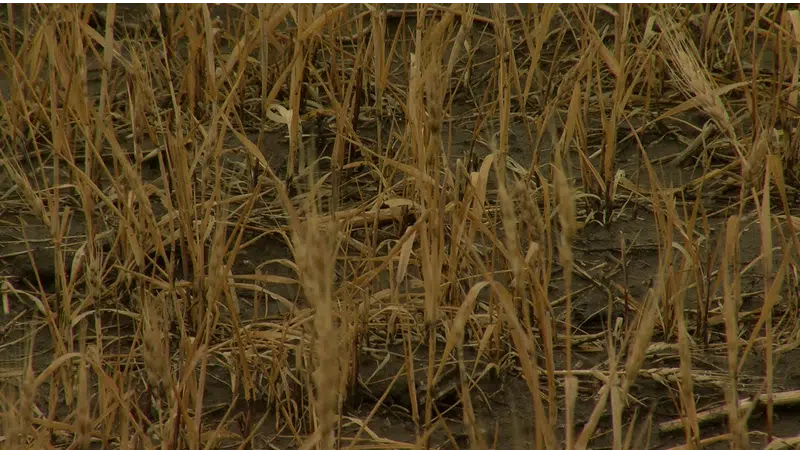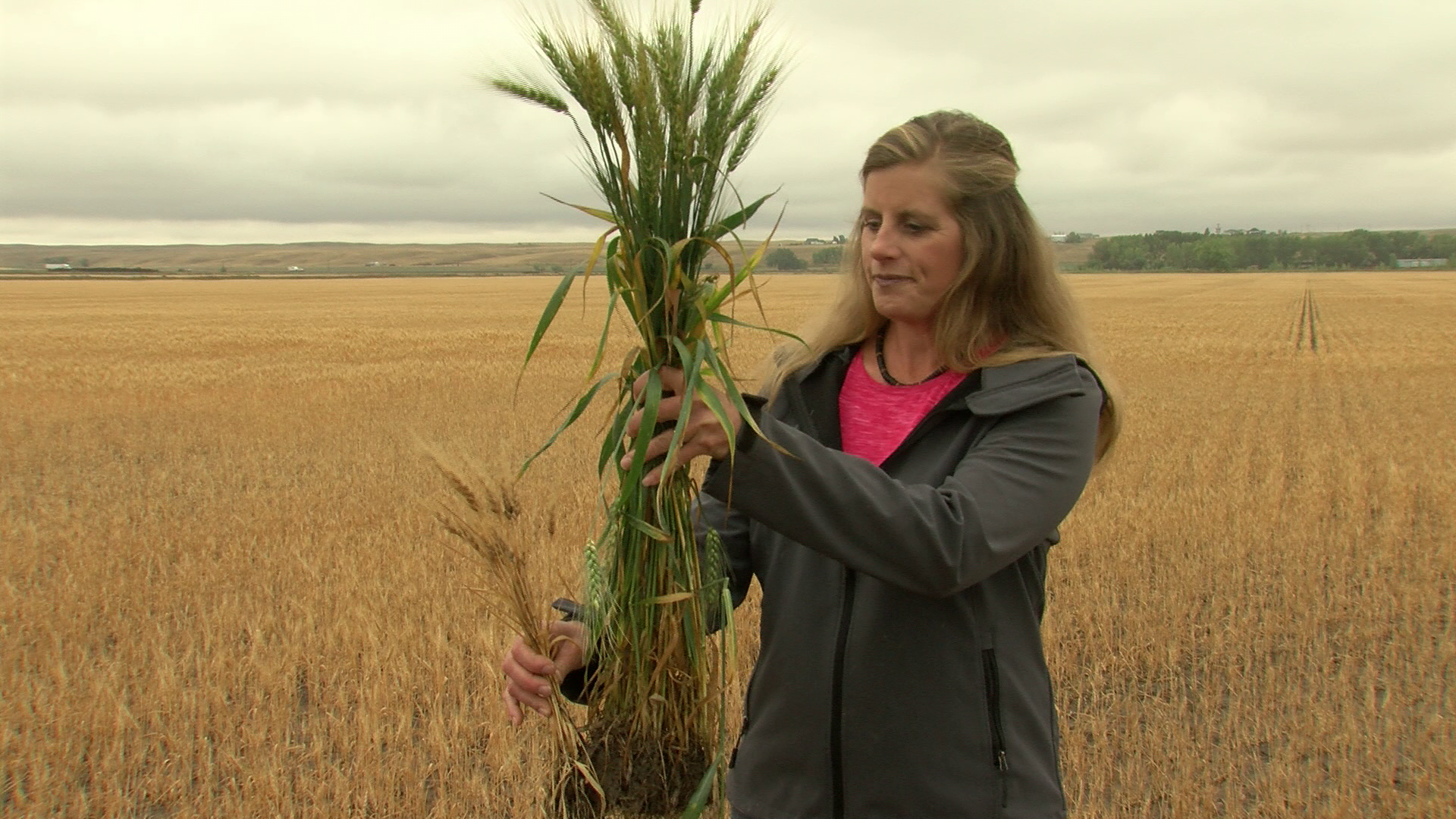
Crops devastated by fourth driest July in Medicine Hat area history
CYPRESS COUNTY, AB — Many farmers and ranchers have been struggling during the summer of 2019, as a result of one of the driest July’s on record.
“Well, it’s been a challenge, we’ve had an exceptionally dry year in our arid little corner of southeastern Alberta,” says Nichole Neubauer, co-owner of Neubauer Farms.
Neubauer grows wheat in both irrigated and non-irrigated fields, and the difference between the yields is drastic.
While the one that gets roughly 10 inches of irrigated moisture a year is tall and green, the crop that depends on rainfall is brittle and yellow.




